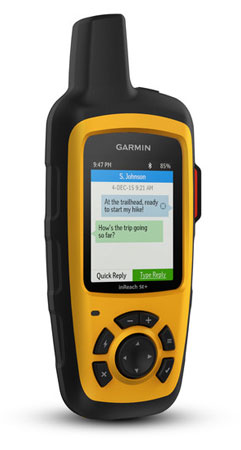InReach and EPIRBs, Round Three
I have to say that I've been rather shocked at the vitriol I received for saying that if I had to choose between the two, I'd take an InReach, which offers two-way communication, over an EPIRB, which is one-way only, for most marine emergencies.
Particularly the vitriol on the part of respondents who clearly have no idea how the InReach GEOS emergency system works in 165 countries and all the oceans of the world, and why it can identify a true emergency faster than if the signal comes from an EPIRB.
People can buy whatever they want, but my opinion is based on having, among other things: sailed for over 50 years, led over 10,000 people on over 3,000 boats more than a collective two million ocean miles; published a sailing magazine for 40 years during which time I wrote about literally hundreds of maritime emergencies, a lot of them fatal; and having owned 27 boats to 71 feet in length in the States, Mexico, the Caribbean, and the Med.
This doesn't mean my poop don't stink, but I think have a little more factual knowledge than the average sailor on the dock.
My opinion is also based on numerous conversations with SAR centers in Alameda, San Diego, and Miami over emergency operations I was involved with including everything from massive heart attacks and other serious offshore medical conditions; boats overdue; boats driven on the beach, boats hit by whales, boats sunk, boats with crew members that went crazy, possible sightings of flares mid-Atlantic, and on and on and on and on.
After the 2016 Baja Ha-Ha, various members of the Coast Guard SAR and I had very amicable conversations on how we could improve Ha-Ha fleet safety while assisting the Coast Guard and preventing them from having to needlessly waste or risk their valuable manpower and resources.
While the SAR folks can't recommend specific products, it was obvious from my conversations with them that the ideal thing would be for all Ha-Ha vessels to have long range two-way communication capability. Both for the Coast Guard and for me. It would have made so many previous problems no problems at all. In many way this requirement both made the InReach the ideal candidate, and immediately eliminated EPIRBs from consideration.
So that's the background for my opinion.
The truth is that there is no single device that would be ideal for all emergency situations. Which is why I have just about everything on my 63-ft cat: an InReach, an EPIRB, a satphone, and an SSB radio. If you can afford it, I recommend that you do the same.
For those who can afford only one, my contention continues to be that the InReach would do the best job in the greatest number of emergency situations. If you've done the research and disagree with me, I've got no problem with that. But please know what you're talking about.
I'd also note two last points. First, most folks seem to think that the overwhelming number of maritime emergencies involve boats sinking suddenly. This just isn't true. Second, that EPIRBs always work. It's true that the 406s are way more reliable than the old 121s that only worked about half the time, but they are still subject to failure — as one shipwrecked respondent to my previous post attested.
I wish all of you the very best, and hope that none of you ever need a marine emergency device of any type.
Poobah
|

